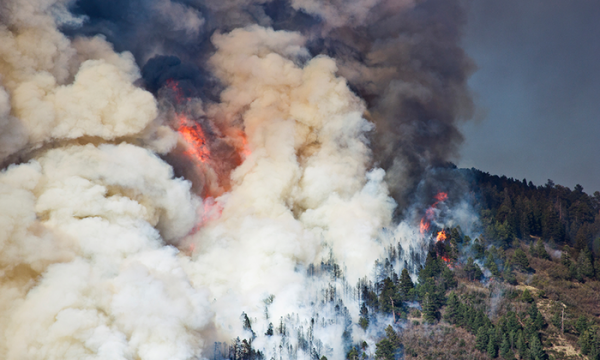Seasonal temperature, moisture loss from plants and wind speed are what primarily drive fires that sweep across the same landscape multiple times, a new study reveals.
Seasonal temperature, moisture loss from plants and wind speed are what primarily drive fires that sweep across the same landscape multiple times, a new study reveals. These findings and others could help land managers plan more effective treatments in areas susceptible to fire, particularly in the fire-ravaged wildland-urban interfaces of California.
“Rapid climate change is the force behind these re-burns, which are increasing across the West at roughly the same rate as single-burn fires,” said Kurt Solander, a hydrologist at Los Alamos National Laboratory. Solander is corresponding author of the artificial-intelligence-based paper in the journal Environmental Research: Climate. “Predictive computer models of re-burns are thus essential to better understand their causes so that forest management practices, such as prescribed burns and forest thinning, can be updated to account for these events.”
The study defined re-burns as areas that burned multiple times over 10 to 20 years. Other factors contributing to re-burns include monthly minimum and maximum temperatures, canopy moisture levels, precipitation, runoff and more.
Read more at: Los Alamos National Laboratory
Fires scorching previously burned land are increasing at about the same rate as wildfires in the West. Understanding how to predict them provides a new tool for getting ahead of the problem. (Photo Credit: Los Alamos National Laboratory)




